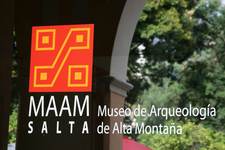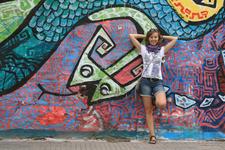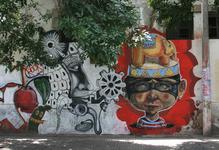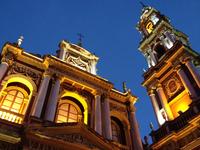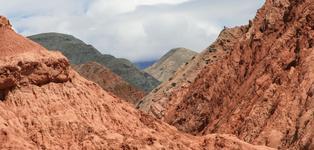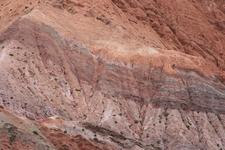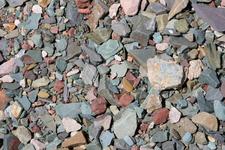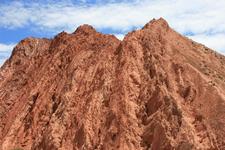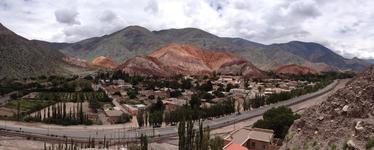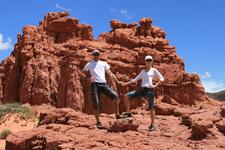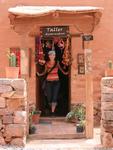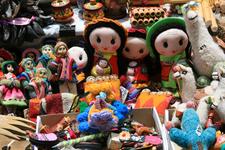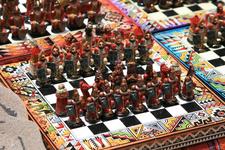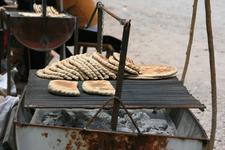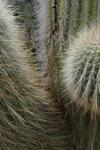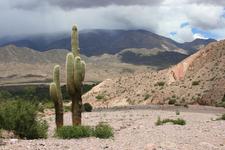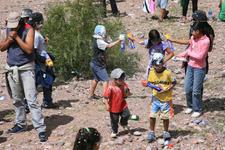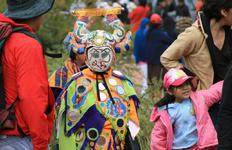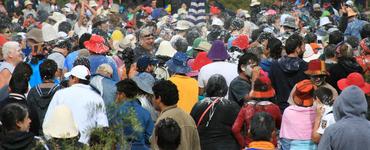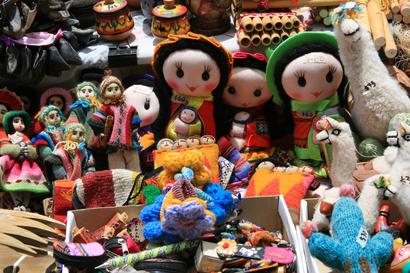
We decided to visit the north-west part of Argentina as all people we’d met on the way recommended us to see it. All we knew before going there was that Salta is a nice town and that the Quebrada de Humahuaca is on the UNESCO list. The fact that we had no idea what a quebrada is made us even more curious.
First we arrived in Salta. It’s a nice town with a pretty main square, a nice church, numerous bars, pubs, cafes and restaurants, even more tour agencies and a great museum: Museo de Archeología de Alta Montaña (MAAM). On exhibition there are three very well-preserved few-hundred-years-old mummies of children who were buried alive in the Volcano Llullaillaco at the altitude of 6700 m above sea level. The film you can watch in the museum explains that those children (6, 7 and 15 years old) were offered to gods during the Capacocha ceremony. The ritual began in Cusco where all the prominent families brought their most beautiful children to present them to the Inca community. To do that properly the children were dressed in beautiful clothes and they were ornamented with traditional jewelry made of gold, silver, stones, fabrics and feathers. After the proper presentation in the capital of the Incas’ kingdom the families traveled back to their home villages where the ceremony continued. The children were presented to the local communities as some kind of the chosen ones. They were then drunken to unconsciousness, taken to the sacred place up in the volcano where they were buried alive fully dressed and with all the jewlery. This offer to gods was supposed to bring luck, happiness and prosperity to the remaining villagers.
From Salta we drove north to San Salvador de Jujuy. The city itself is not a pretty one but it is situated in a good place if you want to explore the quebradas (which are kind of small canyons or ravines) and the small, picturesque towns located near them. We visited Purmamarca, Tilcara, Humahuaca and Uquia. In the first one we did a short trek to the Cerros de los Siete Colores (hills of seven colours) and in the last one we experienced the local carnival.
What I understood from the carnival traditions here in the north of Argentina “the rules of the game” are as following: 1) the lauder music the better, 2) the more flour and foam in spray the better chances to win the fight 3) the more alcohol the better and 4) if you still haven’t got enough fun there are some devils you need to chase away from the town to make it a safe place until the next carnival. Of course, I realize that there is much more to it and that there are years of traditions behind. Yet, this is how it looks like nowadays after the parades presenting traditional music and dances are over.
Well, this is it of Argentina. After travelling through this country for around six weeks we can say that we’ve got to known it a bit. We’ve seen glaciers, high mountains and colourful rocks. We’ve seen penguins, toucans, guanacos, sea lions and beavers. We’ve danced tango, enjoyed the yerba mate, celebrated Christmas according to the local traditions and tasted a good wine. We’ve had some adrenaline climbing the glaciers and riding the quads. And we’ve been at the end of the world in Ushuaia. But most of all we’ve met amazing people who have hosted us, explained us a lot about their country and therefore we felt so very welcome!
We strongly recommend Argentina to all travelers!
